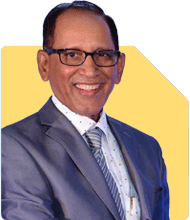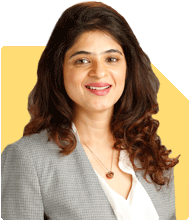25-year-old with MCom and CA Inter struggling to clear 2nd group and find an MNC job: What should I do?
Nayagam P P |9586 Answers |Ask -Follow
Career Counsellor - Answered on Jul 27, 2024
He started his career as an HR professional and has over 10 years of experience in tutoring and mentoring students from Classes 8 to 12, helping them choose the right stream, course and college/university.
He also counsels students on how to prepare for entrance exams for getting admission into reputed universities /colleges for their graduate/postgraduate courses.
He has guided both fresh graduates and experienced professionals on how to write a resume, how to prepare for job interviews and how to negotiate their salary when joining a new job.
Nayagam has published an eBook, Professional Resume Writing Without Googling.
He has a postgraduate degree in human resources from Bhartiya Vidya Bhavan, Delhi, a postgraduate diploma in labour law from Madras University, a postgraduate diploma in school counselling from Symbiosis, Pune, and a certification in child psychology from Counsel India.
He has also completed his master’s degree in career counselling from ICCC-Mindler and Counsel, India.
... more

I'm 25 years old. I have completed my MCOM & cleared 1st group of CA Inter, but after giving so many attempt not able to clear 2nd group. I'm searching for job in MNC.
1) NOT thoroughly going through the Study Materials, provided by ICAI.
2) NOT updating the amendments of various laws.
3) NOT changing the Preparation Strategies.
4) NOT preparing own short-notes.
5) NOT leaving breaks every 45-minutes of studying.
6) NOT maintaining consistent studies.
7) NOT revising the covered topics daily/weekly/monthly.
8) NOT focusing on weak subjects / topics.
9) NOT attempting mock tests frequently.
10) NOT following the ideal study schedule.
If you have searching for jobs:
1) Have a LinkedIn Profile/Update it.
2) Put job Alerts of the vacancies, you prefer to apply
3) Please keep in mind you are fresher. Avoid being specific for MNC. Join even any medium-sized Company & gain experience.
4) Keep upgrading your skills / knowledge through Certifications to be competitive in the job market.
5) Try to apply to at least 3-4 companies daily through LinkedIn or through the Companies Websites.
All the BEST for Your Bright Future.
To know more on ‘ Careers | Education | Jobs’, ask / Follow Us here in RediffGURUS.
You may like to see similar questions and answers below
Mayank Kumar | Answer |Ask -Follow
Education Expert - Answered on Dec 21, 2023
Ashwini Dasgupta |114 Answers |Ask -Follow
Personality Development Expert, Career Coach - Answered on Apr 28, 2024
Prof Suvasish Mukhopadhyay |2740 Answers |Ask -Follow
Career Counsellor - Answered on Nov 11, 2024
Patrick Dsouza |1338 Answers |Ask -Follow
CAT, XAT, CMAT, CET Expert - Answered on Feb 18, 2025
Dr Nagarajan J S K |2026 Answers |Ask -Follow
NEET, Medical, Pharmacy Careers - Answered on Jul 28, 2025
Dr Nagarajan J S K |2026 Answers |Ask -Follow
NEET, Medical, Pharmacy Careers - Answered on Jul 28, 2025
Dr Nagarajan J S K |2026 Answers |Ask -Follow
NEET, Medical, Pharmacy Careers - Answered on Jul 28, 2025
Dr Nagarajan J S K |2026 Answers |Ask -Follow
NEET, Medical, Pharmacy Careers - Answered on Jul 28, 2025
Nayagam P P |9586 Answers |Ask -Follow
Career Counsellor - Answered on Jul 28, 2025
Nayagam P P |9586 Answers |Ask -Follow
Career Counsellor - Answered on Jul 28, 2025
Nayagam P P |9586 Answers |Ask -Follow
Career Counsellor - Answered on Jul 28, 2025
Nayagam P P |9586 Answers |Ask -Follow
Career Counsellor - Answered on Jul 28, 2025
Nayagam P P |9586 Answers |Ask -Follow
Career Counsellor - Answered on Jul 28, 2025
Nayagam P P |9586 Answers |Ask -Follow
Career Counsellor - Answered on Jul 28, 2025























